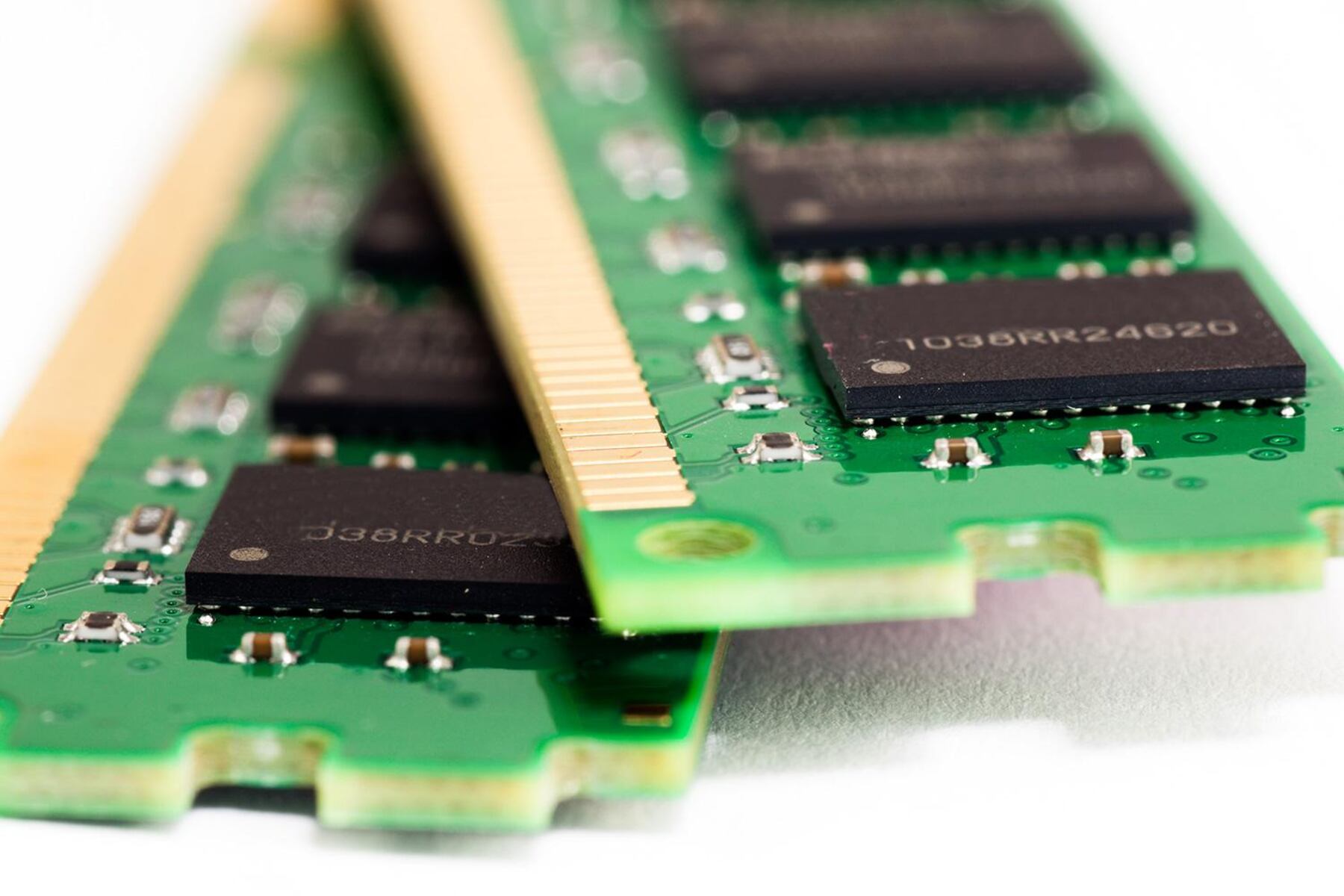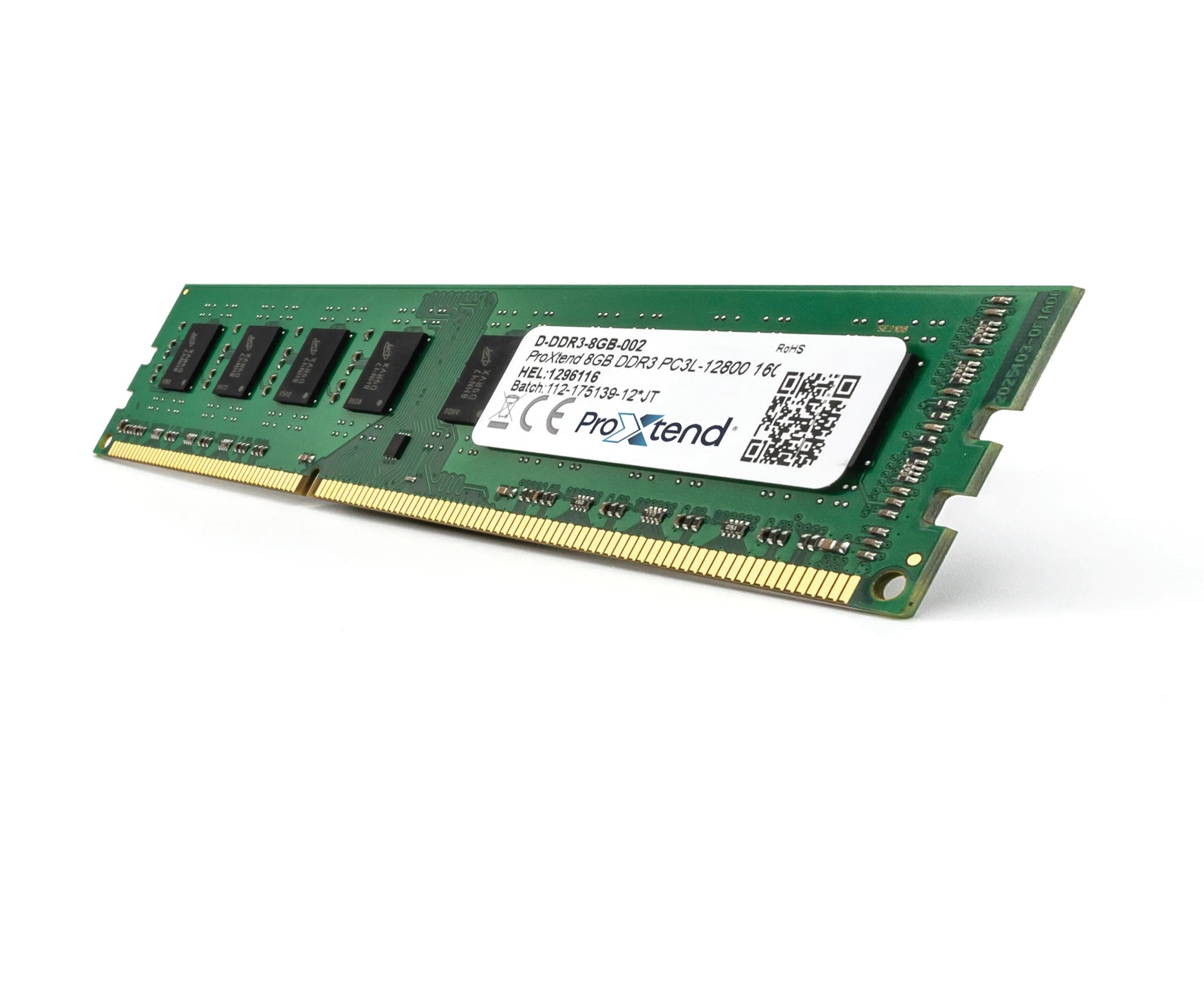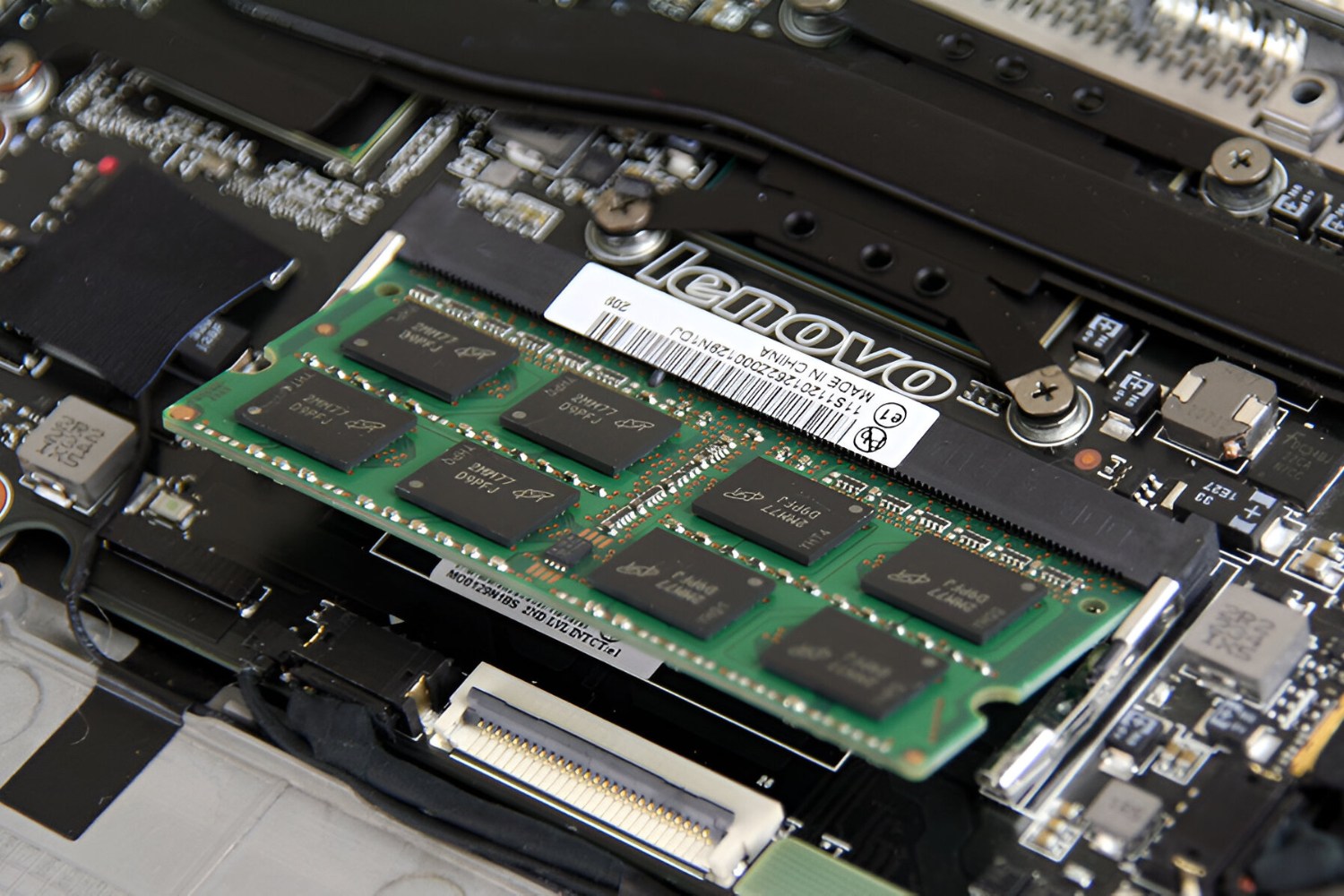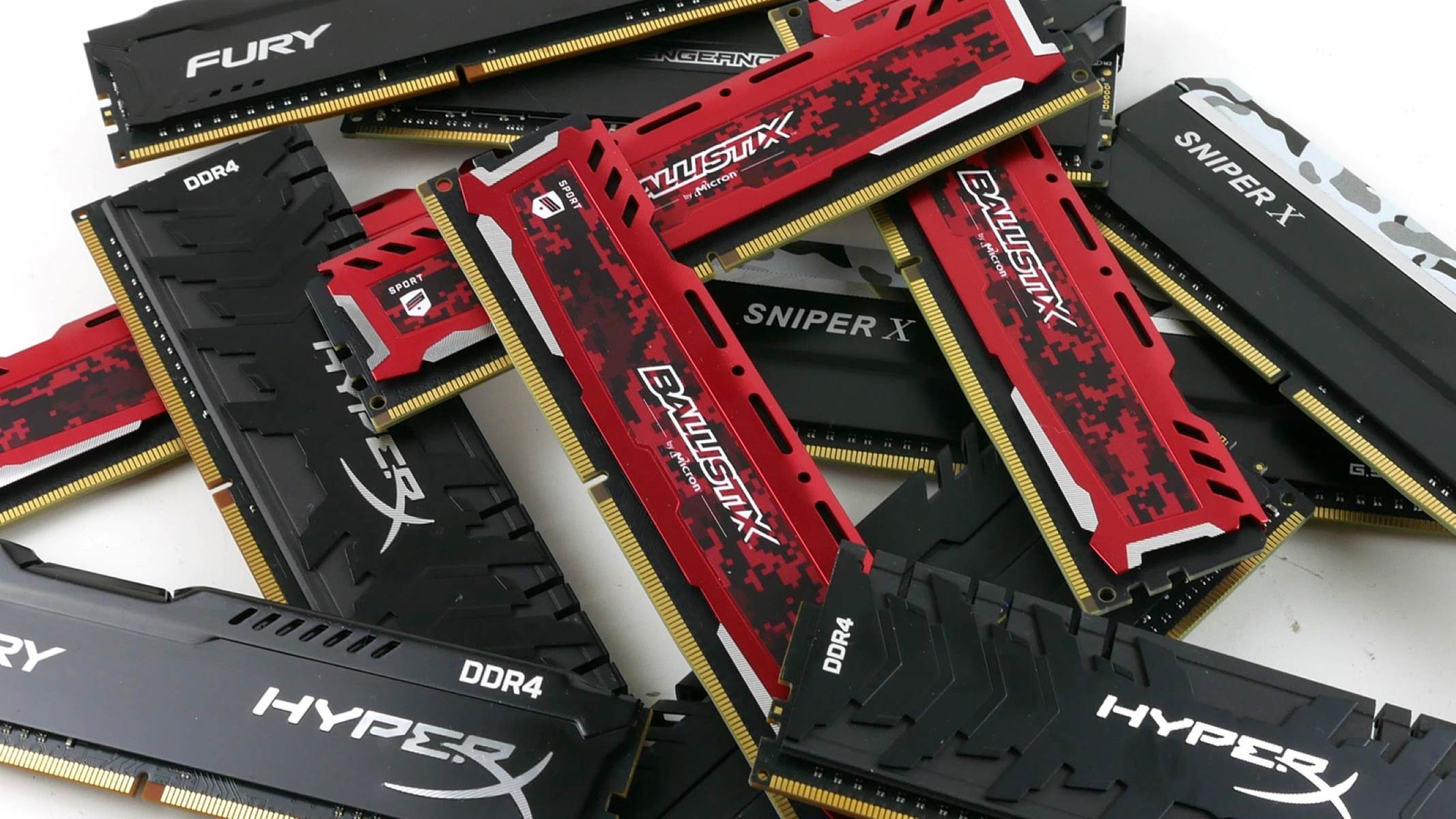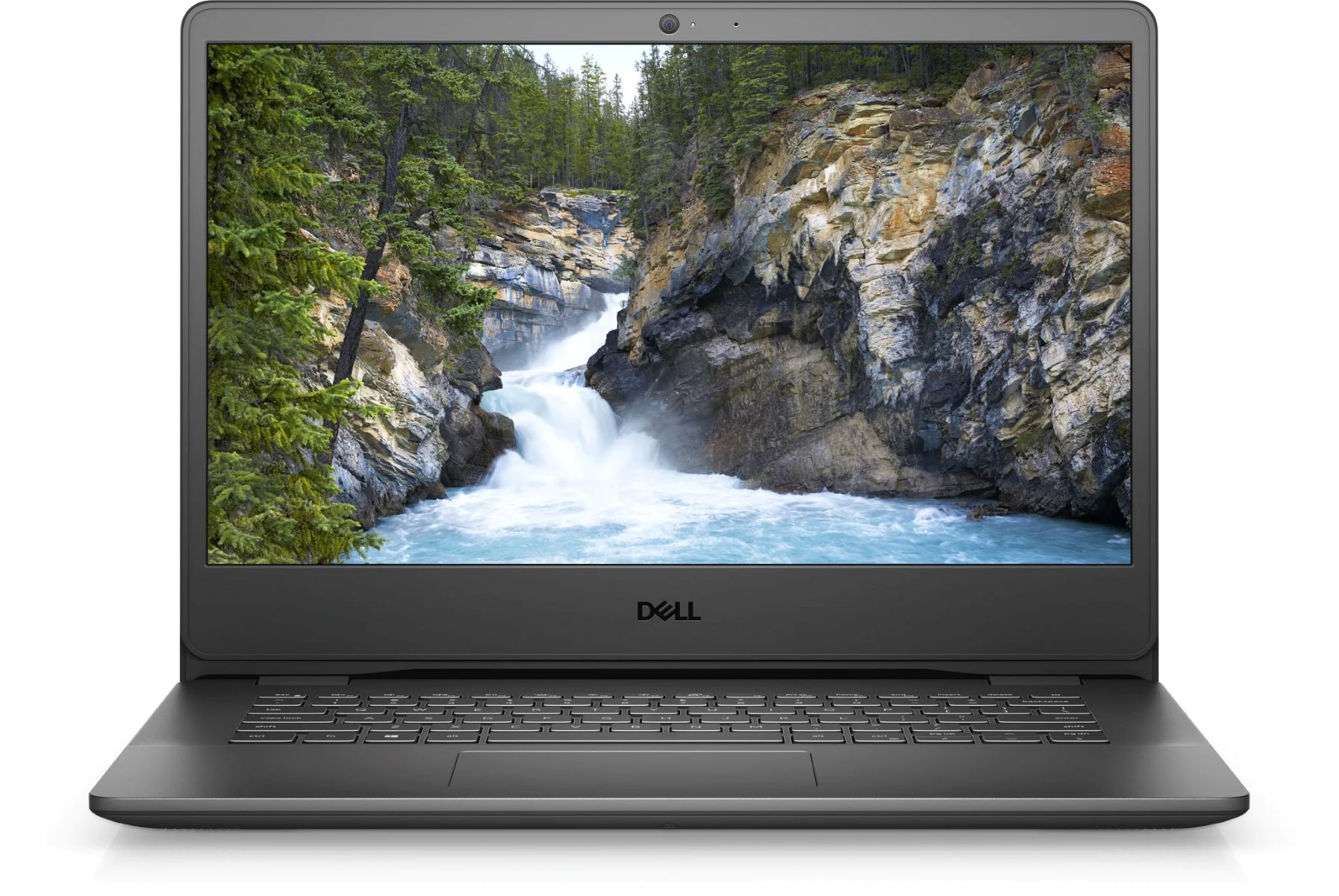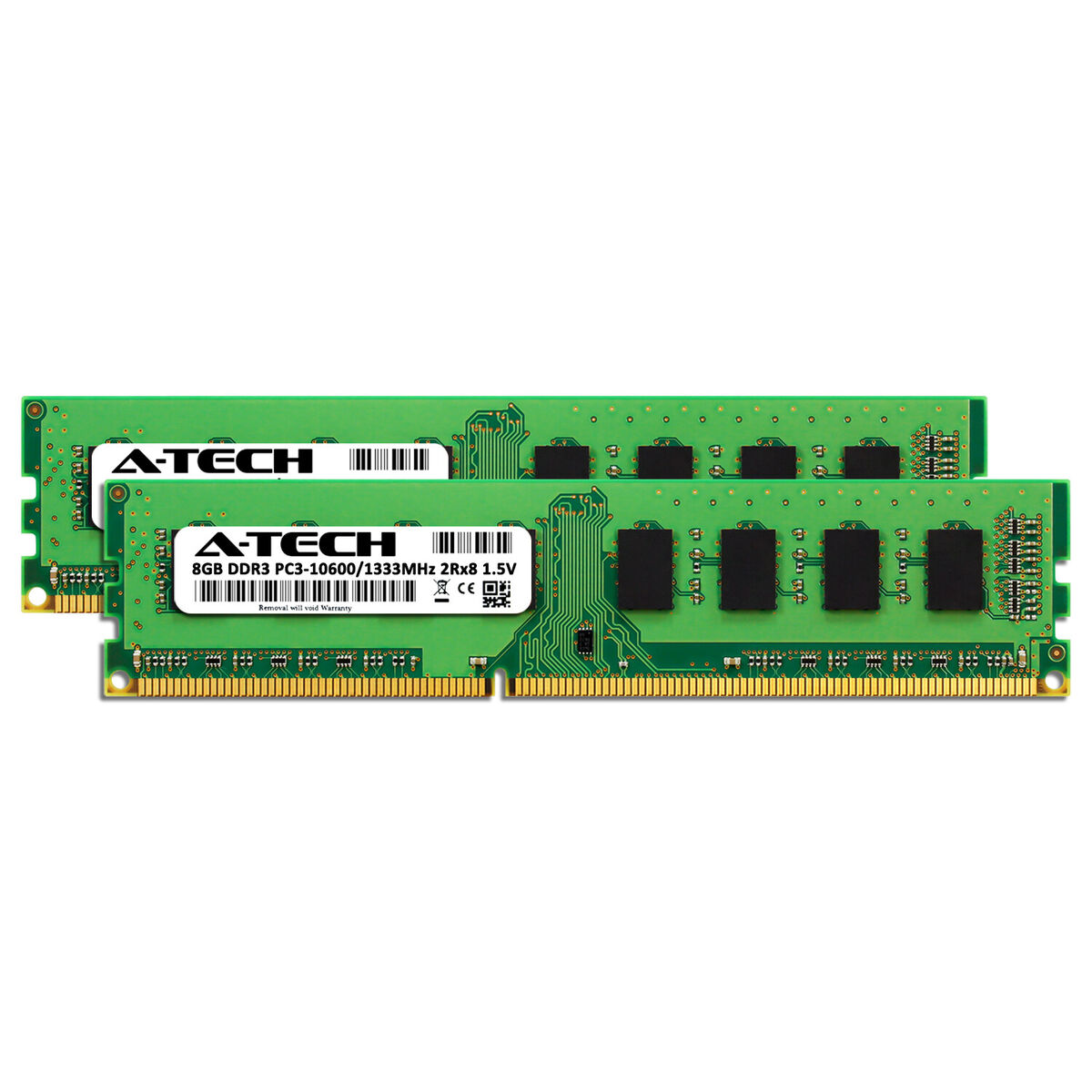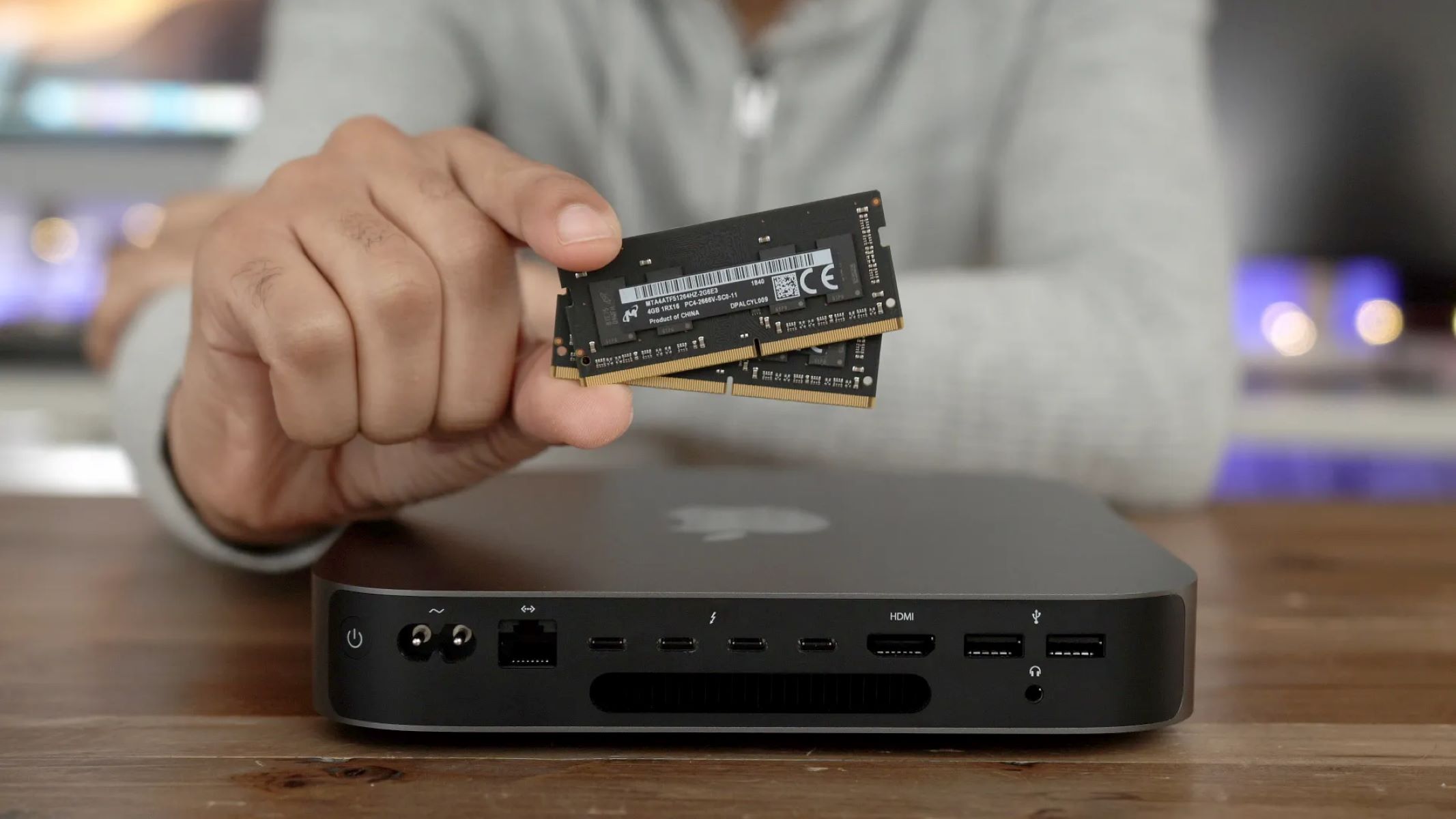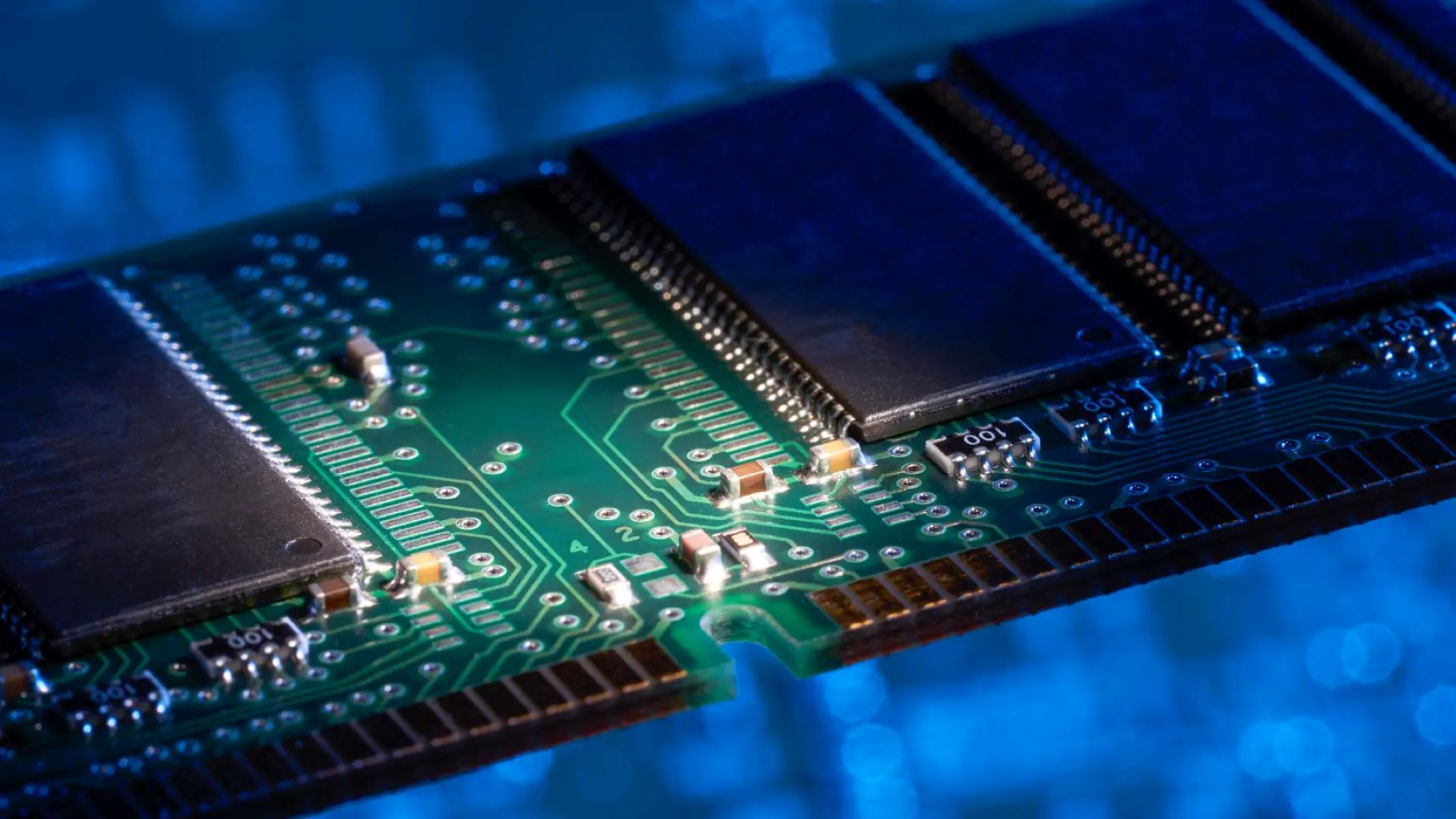Introduction
When it comes to understanding computer hardware, the term “8GB of RAM” is often mentioned. For those who are not well-versed in technology, this phrase can be puzzling. What exactly is 8GB of RAM? How does it affect the performance of a computer?
To answer these questions, it is important to first understand what RAM is. RAM, which stands for Random Access Memory, plays a vital role in a computer’s functionality. It is where data is temporarily stored when the computer is in use. Unlike the computer’s hard drive, which stores data long-term, RAM provides the processor with fast access to the information it needs to carry out tasks efficiently.
RAM is measured in bytes, similar to other forms of digital storage. The term “8GB of RAM” refers to the amount of RAM a computer has installed. Specifically, it indicates that the computer has 8 gigabytes of RAM available for processing data.
Now that we know what 8GB of RAM signifies, let’s explore what this amount can handle. The capabilities of 8GB of RAM can vary depending on the specific computer system and its intended use. Some systems may be able to handle multiple tasks simultaneously with 8GB of RAM, while others may struggle.
So, is 8GB of RAM enough? The answer to this question depends on various factors, such as the operating system, software requirements, and the user’s specific needs. While 8GB of RAM might be sufficient for basic tasks and everyday use, it may not be ideal for resource-intensive activities like gaming or video editing.
However, 8GB of RAM can still be a suitable choice for many users. Let’s explore the common uses for 8GB of RAM and the benefits of upgrading to this amount.
What is RAM?
RAM, which stands for Random Access Memory, is a crucial component of a computer’s hardware. It acts as a temporary storage space that the computer’s processor can access quickly. Unlike a computer’s hard drive, which provides long-term storage, RAM is used for short-term data storage while the computer is in use.
Think of RAM as the computer’s workbench. When you open a program or perform a task, the necessary data is loaded into RAM for the processor to work on. This allows for faster access and retrieval of information than if the processor had to constantly read data from the hard drive.
RAM is measured in bytes. One gigabyte (GB) equals 1,073,741,824 bytes. The more RAM a computer has, the more data it can store and access quickly. This enables the processor to work efficiently and handle multiple tasks simultaneously.
It’s important to note that RAM is volatile memory, meaning its contents are cleared when the computer is powered off. This is why saving data to the hard drive or other non-volatile storage devices is essential for long-term preservation.
RAM plays a fundamental role in determining a computer’s performance. Insufficient RAM can lead to slower response times, lag, and general system sluggishness. On the other hand, having an adequate amount of RAM can improve multitasking capabilities, increase program loading times, and provide a smoother overall user experience.
It’s worth noting that the amount of RAM required can vary depending on the specific needs and usage patterns of the user. Basic tasks such as web browsing, word processing, and email can be adequately handled with lower amounts of RAM, while more demanding applications like gaming, video editing, and graphic design may require larger amounts of RAM for optimal performance.
In summary, RAM serves as a temporary storage space for a computer’s processor to quickly access data. It plays a vital role in determining a computer’s performance, with larger amounts of RAM generally leading to improved multitasking capabilities and faster program response times.
How is RAM Measured?
RAM, or Random Access Memory, is measured in bytes. The byte is the basic unit of measurement for digital storage, representing a sequence of eight bits. However, as RAM capacities have increased, higher units of measurement have become more commonly used to simplify the representation of large amounts of memory.
The most commonly used units for measuring RAM are kilobytes (KB), megabytes (MB), gigabytes (GB), and, more recently, terabytes (TB). Each unit represents an increasing order of magnitude, with each larger unit containing a greater number of bytes.
Here’s a breakdown of the different RAM measurement units:
- Kilobytes (KB): One kilobyte is equal to 1,024 bytes. This unit is mainly used to represent smaller amounts of RAM. It is rarely used to describe modern computer systems as they typically have much larger capacities.
- Megabytes (MB): One megabyte is equal to 1,048,576 bytes, or approximately one million bytes. This unit is commonly used to describe RAM capacities in older computer systems.
- Gigabytes (GB): One gigabyte is equal to 1,073,741,824 bytes, or approximately one billion bytes. This unit is widely used to measure RAM in modern computer systems. Common RAM sizes include 4GB, 8GB, 16GB, and higher.
- Terabytes (TB): One terabyte is equal to 1,099,511,627,776 bytes, or approximately one trillion bytes. While terabyte-sized RAM is not yet commercially available, it is worth mentioning as a unit of measurement to highlight the possibility of such high-capacity systems in the future.
When purchasing RAM or referring to a computer system’s RAM capacity, it is essential to be aware of the unit being used. Mistaking gigabytes for kilobytes, for example, could result in a significant disparity in the anticipated memory capacity.
It’s worth noting that RAM modules typically come in standardized sizes, such as 4GB, 8GB, or 16GB. These sizes are designed to be compatible with most computer systems and are available from various manufacturers.
In summary, RAM is measured using units such as bytes, kilobytes, megabytes, gigabytes, and terabytes. The specific unit used depends on the size of the RAM capacity being described, with gigabytes being the most commonly used unit for modern computer systems.
What is 8GB of RAM?
When we refer to “8GB of RAM,” we are specifically talking about the amount of Random Access Memory (RAM) a computer system has installed. The term “8GB” represents 8 gigabytes of RAM. But what exactly does this mean for the performance and capabilities of a computer?
An 8GB RAM capacity is considered to be a moderate amount of memory for most ordinary tasks and everyday computer usage. It provides a significant boost in performance compared to lower RAM capacities and can handle a wide range of applications and multitasking scenarios.
With 8GB of RAM, your computer can efficiently handle tasks like web browsing, document editing, media playback, and even light gaming. It allows for smooth multitasking, enabling you to run several applications simultaneously without experiencing significant slowdowns or performance issues.
Additionally, 8GB of RAM is sufficient for running popular software applications, such as Microsoft Office Suite, Adobe Photoshop, and web development tools, without any noticeable lag or delays. It provides ample memory for these software programs to load quickly and operate smoothly.
It’s important to note that the RAM requirements for specific applications can vary. Resource-intensive tasks like gaming, video editing, 3D modeling, and virtualization may benefit from higher RAM capacities. However, for most typical computer usage, 8GB of RAM is generally considered a good balance between affordability and performance.
It’s worth mentioning that the amount of RAM a computer can support depends on the hardware and operating system limitations. Before upgrading or purchasing a computer with 8GB of RAM, it is essential to check the system requirements and verify compatibility with your specific needs and usage patterns.
In summary, 8GB of RAM refers to the specific amount of memory a computer system has installed. This capacity offers sufficient performance and multitasking capabilities for most everyday tasks and applications. While it may not be suitable for resource-intensive tasks, 8GB of RAM strikes a balance between affordability and performance for the average user.
How Much Can 8GB of RAM Handle?
When it comes to determining the capabilities of 8GB of RAM, it is essential to consider the specific tasks and applications you intend to use on your computer. While 8GB of RAM provides a decent amount of memory for most average users, it does have its limitations when it comes to resource-intensive activities.
For everyday tasks such as web browsing, email, word processing, and media playback, 8GB of RAM is more than sufficient. It allows you to seamlessly switch between multiple tabs or applications without experiencing significant slowdowns or performance issues. You can comfortably run these tasks simultaneously without worrying about exhausting your computer’s memory.
When it comes to more demanding applications like gaming, video editing, graphic design, or running virtual machines, 8GB of RAM may start to show its limitations. These resource-intensive activities tend to require larger amounts of memory to function optimally.
Gaming enthusiasts, particularly those playing modern and graphics-intensive games, often prefer systems with higher RAM capacities. While some games can run fine with 8GB of RAM, newer titles and those with high-resolution graphics may require more memory to deliver smooth gameplay and prevent frame rate drops.
Similarly, video editing and graphic design software can benefit from larger RAM capacities, especially when working with high-resolution videos or complex graphics projects. With more RAM, you can process data faster, experience smoother rendering, and handle larger files without performance bottlenecks.
In some cases, running multiple virtual machines simultaneously may also require more than 8GB of RAM. Each virtual machine consumes a portion of your computer’s memory, so if you plan to run multiple instances concurrently, it is advisable to have a higher RAM capacity to ensure smooth performance.
Ultimately, the amount of RAM required depends on the specific tasks you intend to carry out on your computer. For regular day-to-day activities, 8GB of RAM is generally sufficient. However, if you engage in activities that demand more memory, such as gaming, video editing, or running virtual machines, upgrading to a higher RAM capacity may provide a more optimal experience.
It’s important to note that the exact RAM requirements can vary depending on factors such as the specific software versions, the complexity of the tasks, and the operating system itself. Before making any RAM-related decisions or upgrades, it’s always a good idea to consult the system requirements of the applications you use most frequently.
In summary, while 8GB of RAM can handle everyday tasks with ease, it may show its limitations when dealing with resource-intensive activities like gaming, video editing, and running virtual machines. Assessing your specific usage requirements is crucial in determining whether 8GB of RAM is sufficient or if upgrading to a higher capacity would be more beneficial.
Is 8GB of RAM Enough?
The question of whether 8GB of RAM is enough depends on several factors, including your specific usage patterns, the applications you run, and your future needs. For many average users, 8GB of RAM provides adequate performance for day-to-day tasks and multitasking scenarios.
If you primarily use your computer for web browsing, word processing, email, and media playback, 8GB of RAM is generally sufficient. These tasks are not typically resource-intensive and can be handled comfortably with this amount of memory. You can open multiple tabs in your web browser, switch between applications, and perform basic tasks without encountering significant performance issues.
However, as technology continues to evolve and software becomes more demanding, there are certain considerations to keep in mind. For example, if you are a gamer, particularly interested in playing the latest and graphics-intensive titles, 8GB of RAM may fall short. Some modern games require larger amounts of memory to accommodate smooth gameplay, prevent frame rate drops, and load complex in-game environments quickly.
Similarly, if you are involved in tasks such as video editing, graphic design, 3D modeling, or running virtual machines, you may find 8GB of RAM limiting. These activities often involve working with large files and performing memory-intensive operations. In such cases, upgrading to a higher RAM capacity, such as 16GB or 32GB, can improve performance and enable you to work more efficiently.
It’s also important to consider future needs when determining whether 8GB of RAM is enough. If you plan to keep your computer for several years and anticipate increasing demands of software and applications, it may be wise to invest in a higher RAM capacity from the start. This can help future-proof your system and ensure smooth performance as technology advances.
Ultimately, the adequacy of 8GB of RAM depends on your specific requirements and usage patterns. It’s recommended to assess the tasks you commonly perform on your computer and evaluate whether you encounter any noticeable performance limitations with your current RAM capacity. If so, it may be worth considering an upgrade to a higher capacity to ensure optimal performance and productivity.
Keep in mind that upgrading RAM is generally a straightforward process, and many computers allow for easy installation of additional memory modules. If you decide to upgrade, be sure to choose RAM modules that are compatible with your computer’s specifications and consult the manufacturer’s guidelines for the maximum supported RAM capacity.
In summary, for typical daily tasks and average users, 8GB of RAM is usually sufficient. However, it may not be enough for more resource-intensive activities such as gaming, video editing, graphic design, or running virtual machines. Assessing your current and future needs will help determine if upgrading to a higher RAM capacity is necessary for optimal performance.
Common Uses for 8GB of RAM
8GB of RAM is a popular choice for many computer users due to its versatility and ability to handle a wide range of tasks and applications. While it may not be sufficient for resource-intensive activities, it is more than capable of delivering a smooth experience for numerous common uses. Here are some common uses for 8GB of RAM:
- Web Browsing and Email: With 8GB of RAM, you can comfortably browse the web, open multiple tabs, and access resource-intensive websites without experiencing significant slowdowns or performance issues. Email clients and web-based email services also run smoothly with this amount of memory.
- Word Processing and Document Editing: Applications like Microsoft Word, Google Docs, and other word processing software work seamlessly with 8GB of RAM. You can create, edit, and format documents without any noticeable lag or delays.
- Media Playback and Streaming: Whether you’re watching videos, streaming movies, or listening to music, 8GB of RAM provides sufficient memory to handle these activities smoothly. Your computer can process and play media files without buffering or stuttering issues.
- Photo Editing: Basic photo editing tasks using software like Adobe Photoshop or Lightroom can be comfortably accomplished with 8GB of RAM. You will be able to make adjustments, apply filters, and work with moderately sized image files without significant performance bottlenecks.
- Multi-tasking: 8GB of RAM enables efficient multi-tasking, allowing you to run multiple applications simultaneously without experiencing drastic slowdowns. You can have several programs open, switch between them seamlessly, and carry out different tasks efficiently.
- Video Conferencing and Collaboration: With the rise of remote work and virtual meetings, 8GB of RAM is sufficient for smooth video conferencing through platforms like Zoom, Microsoft Teams, or Skype. It allows for clear video communication and concurrent use of collaboration tools without major performance issues.
- Light Gaming: While 8GB of RAM may not meet the requirements of the most demanding and graphics-intensive games, it is suitable for casual and less demanding gaming. You can enjoy popular titles, indie games, and older games without noticeable performance drawbacks.
These are just a few examples of the common uses for 8GB of RAM. It’s worth noting that the specific performance may vary depending on the hardware configuration, operating system, and optimization of the software applications you use. If you engage in more resource-intensive activities or anticipate future growth in your computing needs, you may consider upgrading to a higher RAM capacity.
However, for the average user engaging in typical day-to-day tasks, 8GB of RAM is generally more than enough to provide a smooth and efficient computing experience across a wide range of applications.
Benefits of Upgrading to 8GB of RAM
Upgrading your computer’s RAM to 8GB can bring several benefits and enhance its overall performance. Here are some advantages of upgrading to 8GB of RAM:
- Improved Multitasking: With 8GB of RAM, your computer can handle multiple tasks simultaneously without significant slowdowns. You can seamlessly switch between applications, open multiple tabs in your web browser, and run various programs without experiencing performance bottlenecks.
- Faster Program Loading: More RAM allows your computer to store frequently accessed data and program instructions, resulting in faster loading times for applications. Launching software, opening large files, and switching between programs becomes quicker and more efficient.
- Smoother Performance: Insufficient RAM can cause lag, freezing, and sluggishness. Upgrading to 8GB of RAM ensures smoother performance by providing ample memory for your computer to run tasks efficiently. It reduces the likelihood of experiencing frustrating delays or system slowdowns.
- Better Gaming Experience: While 8GB of RAM may not meet the requirements of the most demanding games, it can significantly enhance your gaming experience compared to lower RAM capacities. More memory allows for smoother gameplay, reduced frame rate drops, and quicker loading of in-game environments.
- Enhanced Creativity and Productivity: If you work with resource-intensive applications like video editing software, graphic design tools, or virtualization software, upgrading to 8GB of RAM can significantly improve your productivity. It enables faster rendering, smoother editing, and better handling of large and complex files.
- Future-Proofing: Technology is constantly evolving, and software requirements continue to increase. By upgrading to 8GB of RAM, you provide your computer with sufficient memory for the foreseeable future. This can help ensure that your system remains capable of handling upcoming software updates and new applications.
- Compatibility with Modern Software: Some newer software applications and operating systems have higher memory requirements to function optimally. Upgrading to 8GB of RAM ensures compatibility and allows you to take full advantage of the latest features and performance improvements.
Overall, upgrading to 8GB of RAM can bring significant performance improvements and enhance your overall computing experience. Whether you’re a casual user, a creative professional, or a gamer, the additional memory provides the necessary headroom for better multitasking, faster program loading, smoother performance, and improved compatibility with modern software.
Before upgrading, it’s important to ensure that your computer’s hardware is compatible with the upgraded RAM and that you follow proper installation procedures. Consulting your computer or motherboard manufacturer’s guidelines can help ensure a successful upgrade process.
Remember that while upgrading your RAM can provide notable benefits, it’s important to consider your specific needs and evaluate whether it’s the most cost-effective solution for improving your computer’s performance. In some cases, other hardware upgrades or software optimizations may also be necessary to maximize overall system performance.
How to Check and Upgrade Your RAM
If you’re considering upgrading your computer’s RAM to 8GB, it’s important to first determine your current RAM capacity and compatibility. Here’s a step-by-step guide on how to check and upgrade your RAM:
- Check your current RAM: On Windows, press the Windows key + R, type “msinfo32” and hit Enter. Look for the “Installed Physical Memory (RAM)” section to see your current RAM capacity. On macOS, click on the Apple menu, select “About This Mac,” and click on the “Memory” tab to see your installed RAM.
- Identify RAM type and specifications: Note down the type of RAM modules you currently have (e.g., DDR3 or DDR4), the speed (MHz), and the number of empty RAM slots available on your motherboard.
- Check maximum supported RAM: Consult your computer or motherboard manufacturer’s documentation or website to determine the maximum RAM your system supports. This information will help you ensure that upgrading to 8GB is compatible.
- Choose compatible RAM: Research and select RAM modules that are compatible with your computer’s specifications. Consider factors such as type, speed, and capacity. Look for reputable brands known for reliable performance and compatibility.
- Power down and open your computer: Shut down your computer and unplug it from the power source. Open the case following proper guidelines and precautions to prevent damage to components.
- Install the new RAM: Locate the RAM slots on your motherboard. Remove any existing RAM modules if necessary by unlatching the clips on the sides. Align the notch on the new RAM module with the slot, gently insert it at a slight angle, and press it down until the clips on each side click into place.
- Power up and verify: Close your computer case, reconnect all cables, and power up the computer. Once the computer boots up, go back to the system information (as described in step 1) to verify that the new RAM has been recognized. It should now display the upgraded RAM capacity.
- Test and ensure stability: Run your computer for a while to ensure stability and performance. Test out various applications, multitask, and check for any issues. If the system operates smoothly without errors, you have successfully upgraded your RAM to 8GB.
It’s important to note that while RAM upgrades are generally straightforward, mistakes can happen. If you encounter any difficulties or compatibility issues, it may be helpful to seek assistance from a professional or consult the support channels provided by your computer or motherboard manufacturer.
Remember to handle RAM modules with care, as electrostatic discharge can damage sensitive components. Ensure that you are properly grounded and follow static electricity precautions during the installation process.
In summary, checking and upgrading your RAM involves determining your current RAM capacity, identifying compatibility requirements, selecting the appropriate RAM modules, physically installing them into your computer, and verifying their recognition. Following proper guidelines and precautions will help ensure a successful RAM upgrade to 8GB, providing you with improved system performance and multitasking capabilities.
Conclusion
Understanding what 8GB of RAM signifies and its implications for computer performance is essential for making informed decisions about your computing needs. RAM, or Random Access Memory, plays a crucial role in how smoothly your computer can handle tasks and run applications.
While 8GB of RAM is generally considered a moderate amount of memory that can handle everyday tasks and provide smooth multitasking capabilities, it may not be sufficient for more resource-intensive activities like gaming, video editing, or running virtual machines. For those types of tasks, upgrading to a higher RAM capacity may be necessary to optimize performance and productivity.
When considering an upgrade to 8GB of RAM, it’s important to check your current RAM capacity, determine compatibility with your hardware, and choose RAM modules that meet the specifications of your computer system. Proper installation and verification of the new RAM are key to ensuring a successful upgrade.
By upgrading to 8GB of RAM, you can experience a range of benefits, including improved multitasking capabilities, faster program loading times, smoother performance, and better compatibility with modern software applications. It can also future-proof your system to some extent, accommodating increasing software requirements and maintaining optimal performance for years to come.
Ultimately, the decision to upgrade to 8GB of RAM depends on your specific needs and usage patterns. Assessing the tasks you commonly perform and understanding the RAM requirements of the applications you use will help you determine if 8GB of RAM is enough or if a higher capacity would be more suitable.
Remember to consult your computer or motherboard manufacturer’s guidelines and seek professional assistance if needed during the upgrade process to ensure a smooth and successful transition to 8GB of RAM.
In summary, 8GB of RAM provides a good balance between affordability and performance for most average users, handling everyday tasks and providing smooth multitasking capabilities. However, for more demanding activities, upgrading to a higher RAM capacity may be necessary to meet the requirements of resource-intensive applications and ensure optimal performance.







